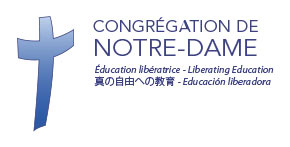James Murray was born on January 21, 1721 or 1722 in Ballencrieff (Scotland). He sailed to America in 1758 and participated in the siege of Louisbourg, and the one in Quebec the following year. In 1759, he was promoted to Major General and put in charge of Quebec. He participated in the battle in Sainte-Foy in 1760 and in the plan by Jeffery Amherst to capture Montreal. In 1760, Murray became the first British Governor of the district of Quebec and in 1763, of the entire province. Distrustful, at first, of religious orders, his attitude gradually changed and he collaborated with them to establish a certain stability. In 1766, because of a political incident, he was called back to England but maintained his position as Governor of Quebec until 1768. He continued his military career in England and never returned to Canada. He died on June 18, 1794 in Beauport House (England).
Guy Carleton, 1st Baron Dorchester, was born in Strabane, Ireland, on September 3, 1724. On May 21, 1742, he joined the British Army and gradually rose through the ranks. With James Wolfe, he participated in the Siege of Quebec where he was wounded during the battle of the Plains of Abraham. He took part in several other military campaigns before being named the second Governor and Administrator of the “Province of Quebec” in October 1768. He participated in the adoption of the Quebec Act in 1774 which allowed, among other things, a return to French civil laws and customs. He repelled the Invasion of Canada in 1775 by the newly-formed Continental Army during the American Revolutionary War, but due to much criticism, he resigned in June 1777, remaining in office until the arrival of his successor Frederick Haldimand in 1778. Carleton was named Commander-in-Chief of the British Forces in North America and held this post from March 1782 to November 1783. He spent the following three years in England and then returned in April 1786 as Commander-in-Chief of the North American British colonies. The title of Baron Dorchester was created for him on August 21, 1786. From that moment on, this was his title in all official documents. On July 9, 1796, Dorchester left Canada for good. Back in England, he pursued his career as General of the Army. He died on November 10, 1808 at Stubbings House, near Maidenhead, England.
Pierre-François-Xavier de Charlevoix was born in October 1682 in Saint-Quentin (France). This Jesuit priest and teacher was charged by the Regent of the Kingdom of France, the Duc dOrléans, to organize an expedition in order to evaluate the French colonys potential in North America. This project took him twenty-five years, from his arrival in Quebec in 1720 until 1744. Considered the first historian of New France, his travel log is still a preeminent reference, especially with regards to Native life and culture.
Joseph-Octave Plessis was born on March 3, 1763 in Montreal. Ordained priest in 1786, he was assigned to Notre-Dame Parish in Quebec in 1792, appointed Bishop Pierre Denauts coadjutor in 1797, and Bishop of Quebec in 1806. From 1814, he supported a drive by the Canadian party to obtain a new education act, of which a first version was approved in 1824. In 1817, he was named to the Legislative Council. He endorsed classical schools and colleges in urban centres as well as in rural areas. He died at the Quebec General Hospital on December 4, 1825.
Jean-Olivier Briand was born on January 23, 1715 in the parish of Plérin (department of Côtes-du-Nord). Ordained priest in March 1739, he was a canon when he arrived in Quebec in 1741. He occupied several functions, among them, secretary and confidant of Bishop Henri-Marie Dubreil de Pontbriand. On the day of the defeat on the Plains of Abraham in 1759, Bishop Pontbriand appointed him Grand Vicar of Quebec. When Pontbriand died in 1760 leaving the Church in Canada without a Bishop, Briand took on an important role in the ecclesiastical administration of the colony. Finally named Bishop in 1763, he was officially consecrated in Paris in 1766. He is remembered for his moderate attitude toward the British administration, his spirit of poverty and his faith in Providence. In 1784, he retired from his functions as Bishop and as administrator of the diocese. He died in the seminary in Quebec on June 25, 1794.
Sister Thérèse Boilard recalls the history of Collège Notre-Dame-de-Bellevue of the Congrégation de Notre-Dame and shares some of her memories.
She points out that it was in 1864 that the Congrégation, already present in Saint-Roch, Québec, took possession of a piece of land in Sainte-Foy. Ten years later, about 50 people, Sisters and students, moved into a building that had been under construction since 1871.
In 1937, by virtue of the affiliation with Université Laval, the convent became Collège Notre-Dame-de-Bellevue. Courses began at the elementary school level and went up to Philosophy II. Sister Boilard gives a tour of the building through pictures. She mentions the parlours, the auditorium which could seat up to 500 students, and the library. She remembers with great sadness the closing of the Collège in 1996 and cites, with emotion, an extract from a text in this regard.
